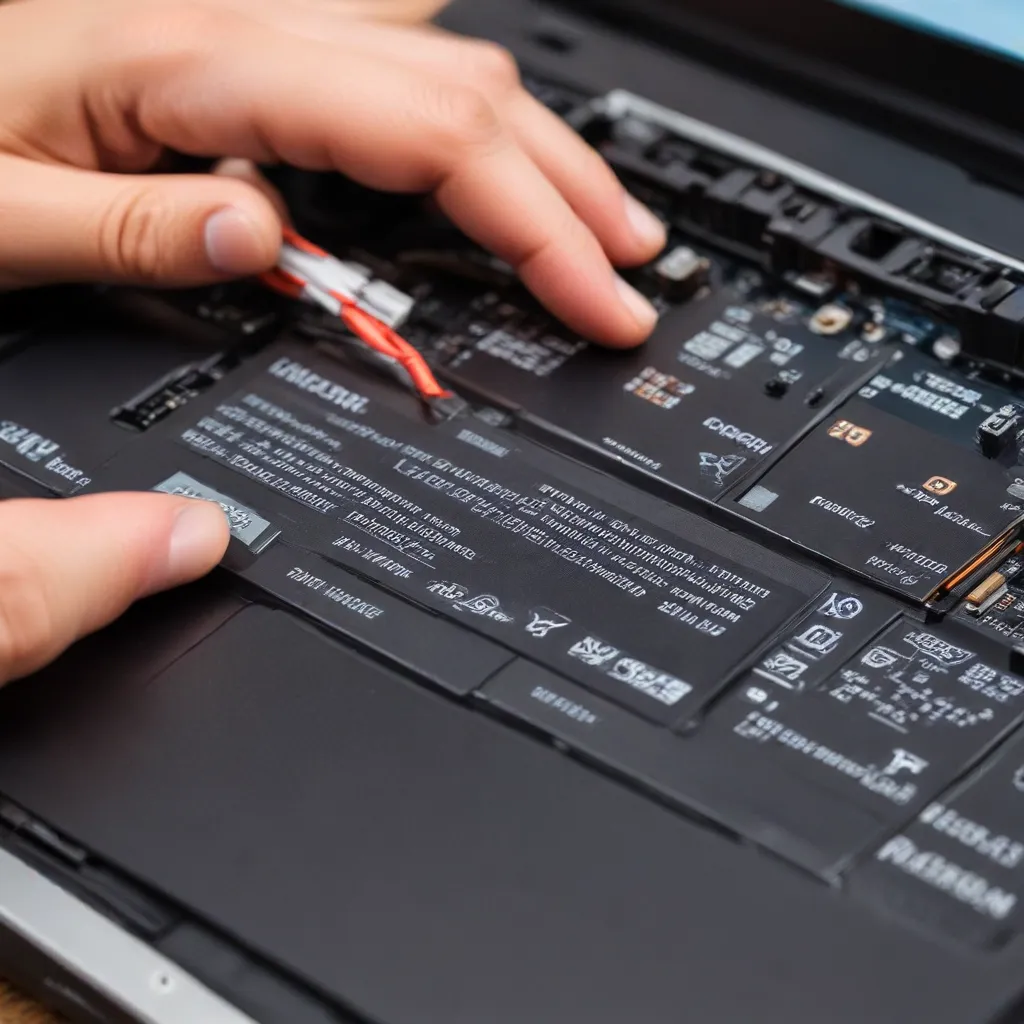
Laptop Power Issues
When your laptop suddenly stops powering on or charging, it can be a frustrating experience. However, many common laptop power problems can be fixed at home without needing to take it to a repair shop. In this comprehensive guide, we’ll walk you through the most effective troubleshooting steps and DIY repairs to get your laptop back up and running.
Laptop Power Supply
The power supply for your laptop consists of a few key components:
Power Adapter
Also known as the AC adapter or charger, this is the brick-like device that converts AC power from the wall outlet to the DC power your laptop uses. If the adapter is faulty, it won’t be able to charge your battery properly.
DC Power Jack
This is the port on your laptop where the power adapter plugs in. Over time, this port can become worn or damaged, preventing a secure connection and disrupting the power supply.
Battery
The battery is responsible for powering your laptop when it’s not plugged in. Issues with the battery, such as reduced capacity or charging problems, can lead to power troubles.
Battery Management
Proper battery management is essential for maintaining a healthy power supply on your laptop. Here are some tips:
Battery Charging
Always use the original power adapter that came with your laptop. Avoid using third-party chargers, as they may not provide the correct voltage and amperage. Fully charge and discharge your battery periodically to keep it calibrated.
Battery Life
To extend your battery’s lifespan, avoid letting it completely drain to 0% too often. Try to keep it between 20-80% charge whenever possible. Also, be mindful of temperature – heat can degrade the battery more quickly.
Battery Replacement
Over time, laptop batteries will wear out and need to be replaced. Signs of a failing battery include reduced runtime, longer charging times, or the battery not holding a charge. When it’s time to replace the battery, make sure to get the correct model for your laptop.
Common Power Problems
Let’s look at some of the most frequent laptop power issues and how to address them.
Sudden Power Loss
If your laptop suddenly shuts off or won’t power on at all, there are a few potential culprits:
Faulty Power Adapter: The power adapter may have stopped working, either due to internal component failure or physical damage. Inspect the adapter for any visible signs of wear or damage.
Battery Drain: If the battery is completely drained, the laptop won’t be able to power on. Try charging the battery for at least 30 minutes before attempting to turn it on again.
Slow Charging
Laptops that take an unusually long time to charge, or don’t seem to be charging at all, could be experiencing:
Damaged Power Port: The DC power jack on the laptop may be worn out or damaged, preventing a secure connection with the power adapter. This can restrict the flow of power and slow down charging.
Overheating Issues: If the laptop is overheating, the charging circuitry may throttle back to prevent further damage. Make sure the laptop’s cooling vents are unobstructed and the fan is working properly.
Troubleshooting Techniques
Before attempting any DIY repairs, it’s important to thoroughly troubleshoot the power issue. Start with these simple steps:
Visual Inspection
Carefully examine the power adapter and laptop’s power port for any visible signs of damage, such as bent pins, cracks, or debris. Also, check the battery for any swelling, discoloration, or leakage.
Power Cycle Procedures
Try performing a soft reset by shutting down the laptop, unplugging the power adapter, and removing the battery (if possible). Wait a minute, then reassemble and try powering on again.
If that doesn’t work, you may need to perform a hard reset. This involves removing the battery and power adapter, then holding down the power button for 30-60 seconds to discharge any residual power. Reconnect everything and try booting up.
DIY Power Repairs
For more serious power issues, you may be able to make some DIY repairs to get your laptop working again. Here are a few common fixes:
Replacing Power Adapter
If the power adapter is faulty, you’ll need to replace it. Make sure to get a compatible adapter that matches the voltage and amperage requirements of your specific laptop model. Refer to your laptop’s documentation or the manufacturer’s website to find the correct replacement.
To install a new adapter, simply unplug the old one and plug in the new one. If the laptop still doesn’t power on, you may need to troubleshoot further.
Battery Replacement
When your laptop’s battery is no longer holding a charge, it’s time for a replacement. First, identify the correct battery type and model number for your laptop. You can usually find this information in your laptop’s manual or on the manufacturer’s website.
To replace the battery, power off the laptop, remove the old battery, and insert the new one, following any instructions provided. Be sure to dispose of the old battery properly.
Remember, while many laptop power issues can be fixed at home, some problems may require professional repair services. If you’re not comfortable attempting a DIY fix, it’s always best to consult a qualified technician.
For all your computer repair needs, be sure to check out the services offered at IT Fix. Our experienced team can diagnose and resolve a wide range of laptop power problems, from faulty adapters to battery replacements. Don’t let a power issue keep your laptop down – let us get you back up and running.












